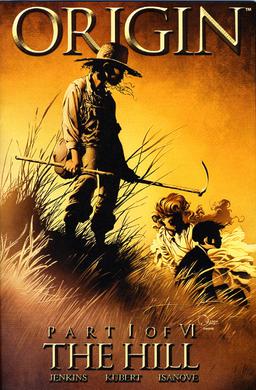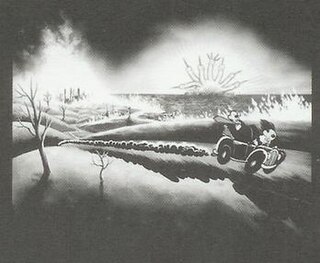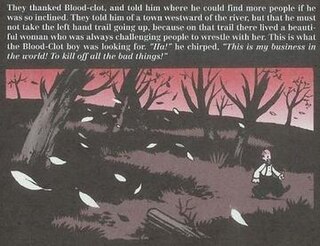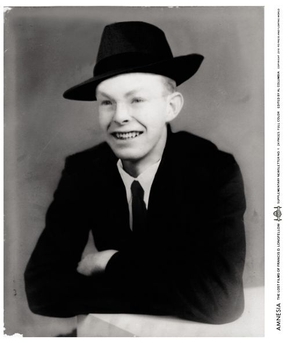
Limited animation is a process in the overall technique of traditional animation that reuses frames of character animation.

The Joker is a supervillain appearing in American comic books published by DC Comics. The character was created by Bill Finger, Bob Kane, and Jerry Robinson, and first appeared in the debut issue of the comic book Batman on April 25, 1940. Credit for the Joker's creation is disputed; Kane and Robinson claimed responsibility for the Joker's design while acknowledging Finger's writing contribution. Although the Joker was planned to be killed off during his initial appearance, he was spared by editorial intervention, allowing the character to endure as the archenemy of the superhero Batman.

Jhonen C. Vasquez is an Mexican-American cartoonist, animator, screenwriter, music video director, and voice actor. He is best known for creating the comic book Johnny the Homicidal Maniac—along with its spin-off comics Squee!, Fillerbunny, and I Feel Sick—and the Nickelodeon animated series Invader Zim.

Traditional animation is an animation technique in which each frame is drawn by hand. The technique was the dominant form of animation in cinema until computer animation.

Batman: The Killing Joke is a 1988 DC Comics one-shot graphic novel featuring the characters Batman and the Joker written by Alan Moore and illustrated by Brian Bolland. The Killing Joke provides an origin story for the supervillain the Joker, loosely adapted from the 1951 story arc "The Man Behind the Red Hood!," which was written by Batman co-creator Bill Finger. The Joker's origin is presented via flashback, while simultaneously depicting his attempt to drive Jim Gordon insane and Batman's desperate attempt to stop him.

The inker is one of the two line artists in traditional comic book production.

Origin is a six-issue comic book limited series published by Marvel Comics from November 2001 to July 2002, written by Bill Jemas, Joe Quesada and Paul Jenkins, and illustrated by Andy Kubert (pencils) and Richard Isanove (color).
Al Columbia is an American artist known for his horror and black humor-themed alternative comics. His published works include the comic book series The Biologic Show, the graphic novel/art book Pim & Francie: The Golden Bear Days, and short stories such as "I Was Killing When Killing Wasn't Cool" and "The Trumpets They Play!". He also works in other media including painting, illustration, printmaking, photography, music, and film.

Little Annie Fanny is a comics series by Harvey Kurtzman and Will Elder. It appeared in 107 two- to seven-page episodes in Playboy magazine from October 1962 to September 1988. Little Annie Fanny is a humorous satire of contemporary American society and its sexual mores. Annie Fanny, the title character, is a statuesque, buxom young blonde woman who innocently finds herself nude in every episode. The series is notable for its painted, luminous color artwork and for being the first full-scale, multi-page comics feature in a major American publication.

Big Numbers is an unfinished graphic novel by writer Alan Moore and artist Bill Sienkiewicz. In 1990 Moore's short-lived imprint Mad Love published two of the planned twelve issues. The series was picked up by Kevin Eastman's Tundra Publishing, but the completed third issue did not print, and the remaining issues, whose artwork was to be handled by Sienkiewicz's assistant Al Columbia, were never finished.

Batman Animated is a coffee table book written by Paul Dini and designed by Chip Kidd, about the popular TV show Batman: The Animated Series. It was first published in a hardcover edition in 1998 by Titan Books. A paperback edition of the book was published later.

Erotic comics are adult comics which focus substantially on nudity and sexual activity, either for their own sake or as a major story element. As such they are usually not permitted to be sold to legal minors. Like other genres of comics, they can consist of single panels, short comic strips, comic books, or graphic novels/albums. Although never a mainstream genre, they have existed as a niche alongside – but usually separate from – other genres of comics.

Whaam! is a 1963 diptych painting by the American artist Roy Lichtenstein. It is one of the best-known works of pop art, and among Lichtenstein's most important paintings. Whaam! was first exhibited at the Leo Castelli Gallery in New York City in 1963, and purchased by the Tate Gallery, London, in 1966. It has been on permanent display at Tate Modern since 2006.

The Biologic Show is a comic book series written and drawn by Al Columbia. The first issue, #0, was released in October 1994 by Fantagraphics Books, and a second issue, #1, was released the following January. A third issue (#2) was announced in the pages of other Fantagraphics publications and solicited in Previews but was never published. "I Was Killing When Killing Wasn't Cool", a color short story with a markedly different art style originally intended for issue #2, appeared instead in the anthology Zero Zero. In a 2010 interview, Columbia recalled that the unfinished issue "looked so different that it just didn’t look right, it didn’t look consistent, and it didn’t feel right to keep putting out that same comic book, to try to tell a story where the style is mutating." The series' title is taken from a passage in the William S. Burroughs book Exterminator!. The passage in question is quoted briefly in a story from issue #0, itself also titled "The Biologic Show".

"I Was Killing When Killing Wasn't Cool" is an 8-page comic by Al Columbia that appeared in the fourth issue of the comics anthology Zero Zero. It was originally created for the never-published third issue (#2) of Columbia's comic book series The Biologic Show. Its title alludes to the 1981 song "I Was Country When Country Wasn't Cool".

"The Trumpets They Play!" is an 8-page comic by Al Columbia. A cartoon interpretation of the Book of Revelation featuring his recurring characters Seymour Sunshine and Knishkebibble the Monkey-Boy, it was published in BLAB! #10 in 1998. Its artwork took Columbia six months to complete. The title was taken from a song by his former roommate and Action Suits bandmate Andy Schmidt.

"The Blood-Clot Boy" is a 6-page comic by Al Columbia loosely based on the tales of a legendary hero of the same name in Blackfoot folklore. It was published in the sixteenth issue of Zero Zero.
A motion comic is a form of animation combining elements of print comic books and animation. Individual panels are expanded into a full shot while sound effects, voice acting, and animation are added to the original artwork. Text boxes, speech bubbles and the onomatopoeia are typically removed to feature more of the original artwork being animated. Motion comics are often released as short serials covering a story arc of a long running series or animating a single release of a graphic novel. Single release issues of a story arc are converted into ten- to twenty-minute-long episodes depending on content.
Eric Reynolds is a Seattle-based cartoonist, critic and comics editor who is the Vice-President and Associate Publisher for Fantagraphics Books. His work has appeared in The Stranger, The Comics Journal, The New York Times, The New York Press and other publications. He has edited or co-edited The Complete Crumb Comics, Angry Youth Comics, Dirty Stories and MOME, and has inked some of Peter Bagge's comics.

Amnesia: The Lost Films of Francis D. Longfellow Supplementary Newsletter No. 1 is a 2018 comic book by Al Columbia. Printed in an oversize 11" x 13" format, it is a 24-page collection of posters allegedly created for animated cartoons by the (fictional) titular director/producer and his company, Podsnap Studios. Some of the "lost films" feature Columbia's recurring protagonists Seymour Sunshine and Knishkebibble the Monkey-Boy, who are depicted here as cartoon characters performed by voice actors. The posters also contain references to earlier Columbia stories such as "The Trumpets They Play!" and "I Was Killing When Killing Wasn't Cool", presenting them as Longfellow's creations and tying them into Amnesia's fictional universe.
















